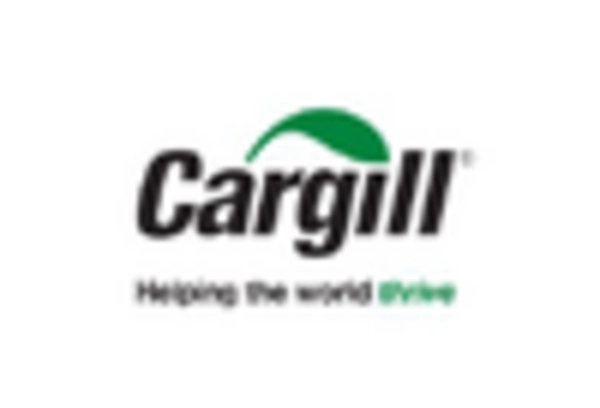The Dry Mixes Market represents a vibrant sector characterized by a vast array of products designed to simplify food preparation and enhance culinary experiences. This market encompasses various dry mix products, including baking mixes, seasonings, gravies, sauces, and beverage mixes, providing diverse food solutions for consumers and the food service industry.
The competitive landscape is shaped by key players who strive to innovate their offerings and capitalize on the increasing consumer demand for convenience foods, health-oriented products, and gourmet experiences at home.
Companies continually invest in research and development to introduce new flavors and formulations while adapting to regional preferences, thus expanding their market reach and bolstering their competitive stature.
Mizkan Holdings exhibits a notable presence in the Dry Mixes Market, leveraging its established reputation in culinary products. The company is recognized for its extensive product range, including various sauces, dressings, vinegar, and dry seasoning mixes that cater to both retail and food service sectors.
Mizkan Holdings' strengths lie in its commitment to quality and innovation, which allows it to adapt to evolving consumer preferences. This adaptability is supported by a robust supply chain and distribution network, ensuring that its products are readily available across multiple markets.
Mizkan's focus on sustainability also enhances its brand image, attracting a consumer base that values eco-friendly practices. This well-rounded approach positions Mizkan Holdings favorably against competitors in the dry mixes segment.
Bunge Limited holds a significant foothold in the Dry Mixes Market, focusing on leveraging its vertically integrated supply chain to maximize efficiency and product quality. The company's strengths are rooted in its agricultural expertise and ingredient sourcing capabilities, which allow it to offer high-quality raw materials for its dry mix products.
Bunge Limited specializes in providing food solutions that meet the demands of both end consumers and food manufacturers, emphasizing versatility and the ability to cater to diverse culinary needs. The company's commitment to innovation is evident in its ongoing research into health-conscious and functional ingredient options, allowing it to adapt to the ongoing shift towards healthier food products.
Bunge Limited's extensive distribution channels ensure a broad market reach, facilitating customer access to its varied dry mix offerings while maintaining strong customer relationships built on trust and reliability.


















Leave a Comment